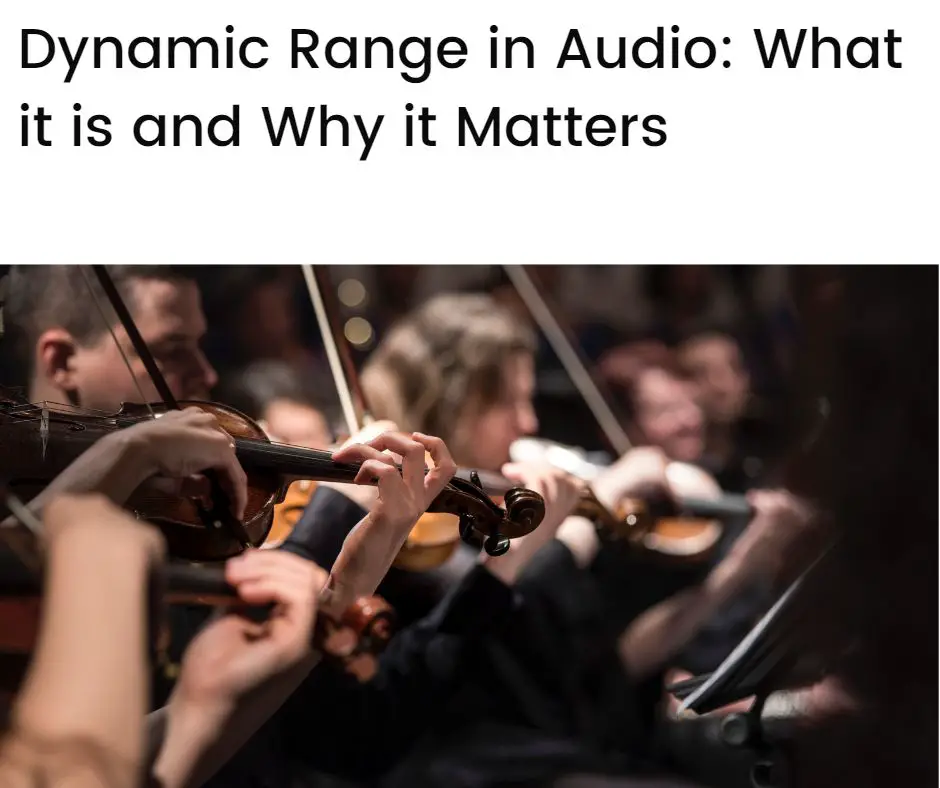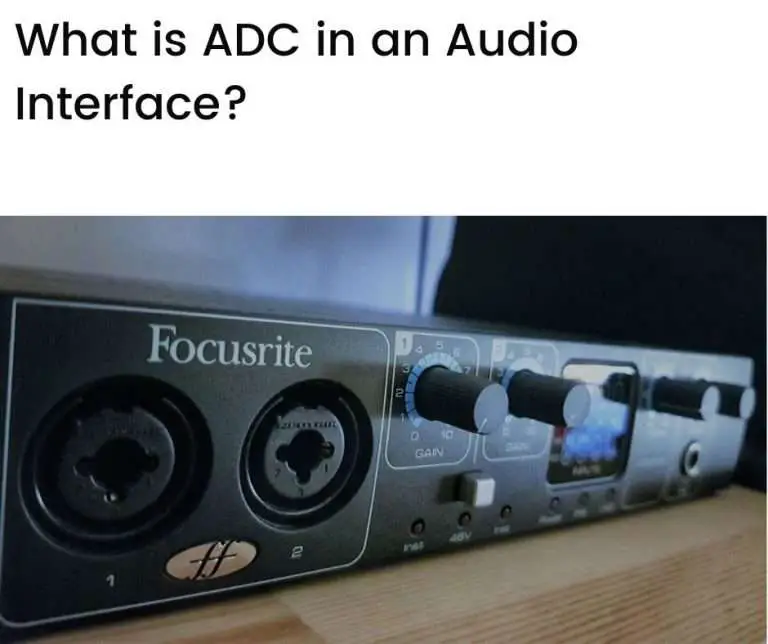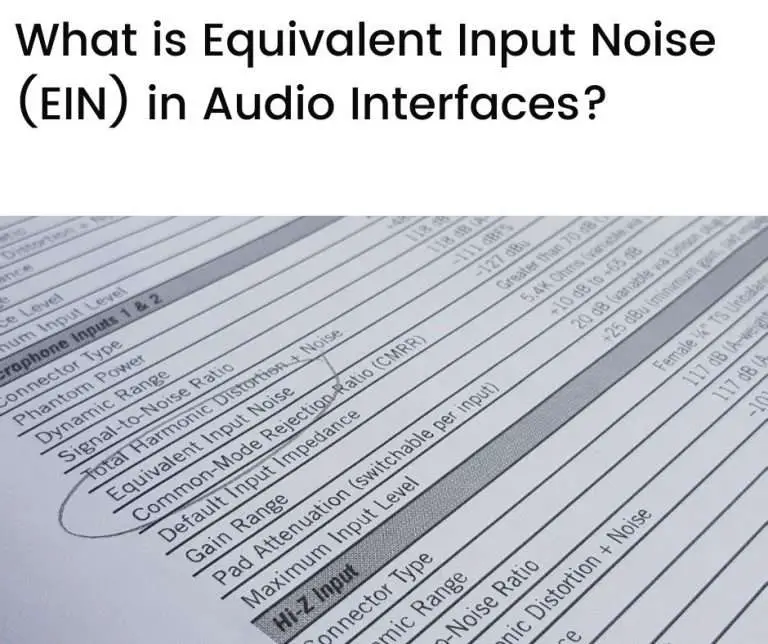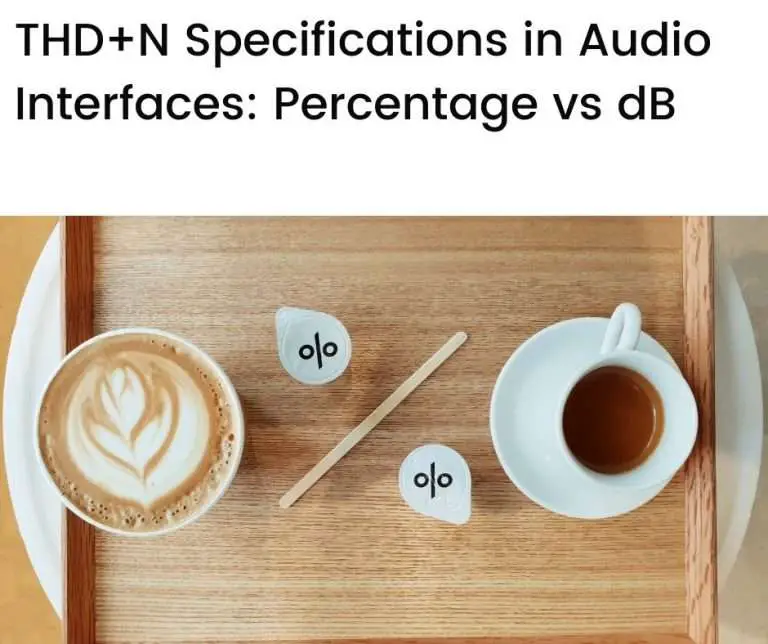Dynamic range is the difference between the quietest and loudest sounds in an audio system without distortion. It indicates the amount of volume variation (dynamics) in audio. The larger the dynamic range, the more contrast you’ll hear between the quietest and loudest parts. Understanding dynamic range is important for audio production, acoustics, and audiology—it affects the clarity and detail of how we perceive sound.
In this article we’ll look at:
- Why dynamic range is important in audio
- Dynamic range and the noise floor
- Dynamic range and compression
- How do you measure dynamic range?
- What are typical dynamic ranges for music?
- The dynamic range of different devices
- Conclusion
- FAQs
Why dynamic range is important in audio
Managing the dynamic range in audio is important for many reasons, including:
Sound quality
A higher dynamic range gives you more depth and clarity of sound, whereas a lower dynamic range means your volume dynamics are more compressed and may sound ‘flat’. A low dynamic range means a loss of contrast, nuance, and detail in music, with fewer natural quiet and loud sections.
Generally speaking, the more you can differentiate between quiet and loud sounds, the better your listening experience (depending on the style of music you’re listening to—see below).
Equipment compatibility
By knowing the dynamic ranges of your equipment you can improve their compatibility.
If your speakers have a higher dynamic range than your amplifiers, for instance, you may not be using your speakers to their full potential.
Or, if your speakers have a lower dynamic range than your amplifier you’ll be missing out on the full breadth of volume dynamics that your amplifier can produce (not to mention the possibility of damaging your speakers).
Volume levels
Dynamic range is all about the relative amplitudes (i.e., volumes) of sound, so knowing the dynamic ranges of the devices in your audio workflow helps you manage the relative volume dynamics across your workflow.
You can prevent clipping and distortion, for instance, by avoiding audio signals that are too loud for your equipment to handle.
Similarly, you can make sure that the softest sounds are properly heard by connecting with equipment that has a low enough noise floor (i.e., the inherent, or minimum, level of noise—see below).
Recording and mixing
You’ll get better volume balance and consistency between your tracks by monitoring and managing their dynamic ranges.
You can ensure that the quietest elements aren’t lost and that the louder elements don’t cause distortion. Other than producing a better mix overall, this will help with your mastering process to produce better results.
Audiology
Dynamic range plays a crucial role in audiology, i.e., the branch of science associated with hearing.
The dynamic range of normal human hearing is around 95 dB. As people get older, their hearing deteriorates and this results in a loss of dynamic range. This makes it harder for them to distinguish between louder and quieter sounds in speech and music.
Reduced dynamic range in hearing is often accompanied by a condition known as ‘recruitment’, which makes it harder for people to tolerate louder sounds.
Audio engineers use various techniques in hearing aids to help people with reduced dynamic range. Two common approaches are wide dynamic range compression (WDRC) and hearing aid expansion. Both approaches adapt the dynamic range of sound to cater to individual hearing abilities.
WDRC compresses a wide range of sound levels based on individual user needs, rather than just limiting all loud sounds like the compressors used in music production. Hearing aid expansion selectively increases the volume of soft sounds so that users can hear desired sounds (e.g., soft music) but not unwanted sounds (e.g., internal noise generated by a hearing aid).
Dynamic range and the noise floor
In audio equipment, the noise floor is the minimum amount of noise that exists—due to inherent, unwanted, or background noise—when there’s no (intended) signal present.
All electronic circuits produce inherent noise due to their physical characteristics. In addition, unwanted or external noise comes from electromagnetic interference or other disturbances, so each component of your music production workflow contributes to the system’s noise floor.
Relating the dynamic range to the noise floor, the lower end of the dynamic range, i.e., the softest sound, is the noise floor. This is because the softest sound needs to be louder than the inherent noise in the system to be heard.
The dynamic range may be described, therefore, as the difference between the noise floor and the maximum (loudest) sound without distortion.
In a high-quality audio system, the noise floor should be as low as possible to maximize the dynamic range.
A lower noise floor allows quieter sounds to be audible and not be drowned by background noise.
A higher noise floor, on the other hand, limits the dynamic range by raising the minimum perceptible sound level in the system, causing quieter parts of the audio to be lost in the system’s intrinsic noise.
Dynamic range and compression
Dynamic range and compression are related in a way that affects the quality and character of sound.
What is compression?
Dynamic range compression is a process that reduces the dynamic range of an audio signal. You can do this by applying a device known as a ‘compressor’ to your audio signal.
But if a higher dynamic range is good for audio, why would you want to reduce (compress) it?
The reason is that a wider dynamic range isn’t always better—it depends on the circumstances, media, and equipment you’re using. Compression helps you manage the dynamic range to levels that work best for your situation.
Why compress audio?
There are three common reasons for compressing audio:
Firstly, in situations with a higher level of background noise—e.g., in a car or when using portable speakers—a moderate amount of compression enhances the listening experience.
Background noise may mask the quieter parts of audio. By ensuring the quieter sounds aren’t drowned out and the louder sounds aren’t overwhelmingly loud, compression helps to maintain a more consistent level of loudness.
Secondly, compression helps manage loudness to levels that suit different types of media.
CDs, for instance, have a wide dynamic range and can handle some compression without (noticeably) losing quality. Vinyl, on the other hand, has a lower dynamic range—so the audio is already compressed—and applying too much (additional) compression reduces quality.
In radio broadcasts, compression gives songs a more consistent volume so that users don’t need to keep adjusting their listening volumes. Similarly, streaming platforms have loudness standards to ensure a consistent listening experience across different tracks.
Thirdly, compression can be used as a sound-shaping tool—you can add sustain to guitars, tighten up drums, or even create a pumping sensation to boost the sense of energy in dance music by managing compression.
Compression across different styles of music
How you use compression also depends on the musical style.
Classical music, for instance, has a wide dynamic range so you should use less compression. The loudest and quietest passages in classical music are essential for its expression, so too much compression would diminish the listening experience.
In contrast, rap music tends to use heavy compression, especially on vocals. This gives it a punchy and aggressive sound that’s characteristic of this style of music.
Pop and country music falls somewhere in between. They typically use moderate compression to achieve a balanced sound and ensure that all elements of the mix are heard.
The image below shows how the dynamic range differs for orchestral music and rock-n-roll—a wide range for orchestral music with more variation in volume dynamics (i.e., less compression) but a tight range for rock-n-roll with more consistent volume dynamics (i.e., more compression).
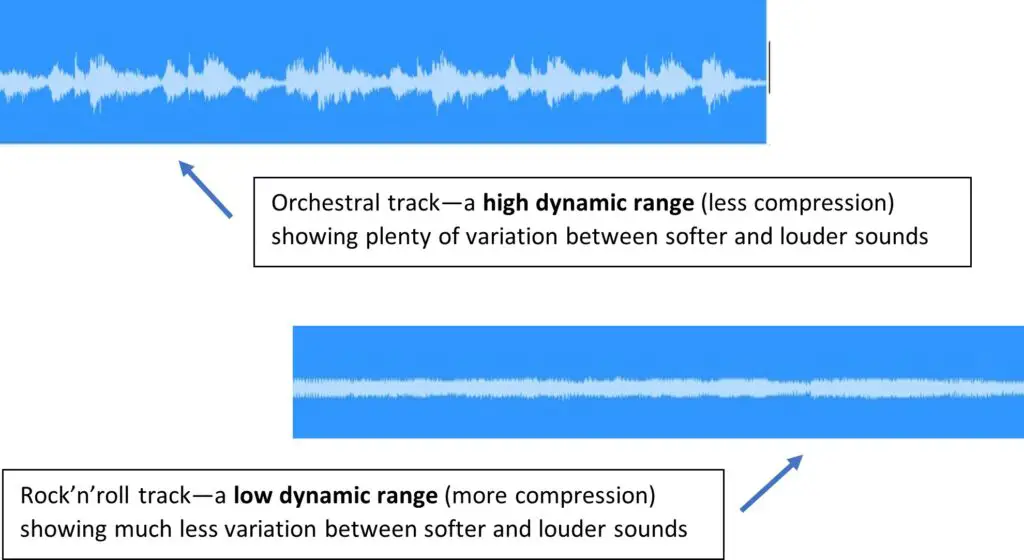
How do you measure dynamic range?
Dynamic range is measured in decibels (dB) and is calculated as the ratio between the loudest and quietest sounds produced.
The dynamic range is calculated as:
Dynamic Range (dB) = 20Log10 ( loudest sound / quietest sound )
The dynamic range is measured differently for analog and digital systems.
Dynamic range in analog systems
To measure dynamic range in an analog system:
- Measure the maximum loudness that the system can produce (or handle) without distortion
- Measure the noise floor level when there is no (intended) signal present
- Apply the dynamic range formula above
Dynamic range in digital systems
In digital audio, the dynamic range is primarily determined by the system’s bit depth—the number of bits of information in each sample. A higher bit depth increases the dynamic range because the system can record and reproduce more subtle changes in volume.
The dynamic range of a digital audio system can be approximated by:
Dynamic Range (dB) = Bit Depth x 6
The 6 in the above formula reflects the phenomenon that each additional bit of a digital signal provides approximately 6 dB of dynamic range.
So, a 16-bit digital audio system—the standard for CDs —has a (theoretical maximum) dynamic range of around 96dB (i.e., 16 x 6 = 96). Similarly, a 24-bit audio interface has a maximum dynamic range of around 144 dB.
In practice, the dynamic range of digital systems will be less than their theoretical maximums due to their noise floor (produced by the physical electronics making up the digital system) and other disturbances. Typical values of dynamic range in professional-grade audio interfaces, for instance, are around 110–120 dB.
A-weighted dynamic range
A-weighted decibels (dBA) are commonly used in audio and acoustics. They are derived by scaling SPLs (i.e., using an A-weighting curve) based on the relative loudness of different frequencies as they are perceived by human ears.
Human ears are most sensitive to frequencies of around 1–10 kHz, so an A-weighting curve attenuates (reduces) lower and higher frequencies to mimic human hearing. This means that A-weighting won’t accurately represent sounds with significant low-frequency or high-frequency content.
A-weighting may, therefore, be misleading when quoting dynamic ranges—unweighted measurements of dynamic range may be several dB worse than A-weighted measurements. This makes A-weighted dynamic ranges appear larger (i.e., better) than their unweighted counterparts.
What are typical dynamic ranges for music?
The dynamic range in music varies across musical styles.
How dynamic range varies by musical genre
Orchestral music, for instance, tends to have a high dynamic range due to the nuances of the many instruments used—from quiet harps or double basses to loud cymbal crashes and trumpets.
Pop and similar music like hip hop or rap tend to have a lower dynamic range, i.e., a more compressed sound, as it’s usually played on radios and streaming services. A consistently loud and punchy sound works best for this type of music.
For live music, a common way to measure loudness is by using sound pressure levels (SPL). The dynamic range of live music can be measured (in dB) as the difference between the loudest (highest SPL) and quietest (lowest SPL) sounds that you can hear.
Using SPLs, research into the dynamic range across different musical styles has found that classical styles of music have the largest dynamic ranges followed by the jazz, pop, and rock styles of music—see the table below (source):
| Musical Style | Approximate Dynamic Range (dB SPL) |
|---|---|
| Chamber music | 17–35 |
| Orchestra | 18–32 |
| Opera | 20–30 |
| Piano | 20–28 |
| Choir | 17–26 |
| Jazz | 12–22 |
| Rap | 12–20 |
| Pop | 12–17 |
| Rock | 12–14 |
The type of medium used also affects the dynamic range. Vinyl records (analog), for instance, can produce a dynamic range of around 70 dB, whereas CDs (digital) can produce dynamic ranges above 90 dB (see below).
The dynamic range of different devices
The dynamic ranges of typical audio equipment and recording media differ based on their design and physical characteristics.
Microphones
Microphones are analog devices and the first point in an audio signal chain. Their dynamic range is defined by the quietest sound they can detect and the loudest sound they can manage before distortion occurs.
Dynamic microphones are sturdy and are often used in live situations. They can handle high SPLs and are less sensitive to loud sounds. This means they can withstand high sound intensity and can have a high dynamic range—up to 140 dB.
Condenser microphones, on the other hand, are more sensitive to low SPLs but cannot handle high SPLs. They’re favored in studio applications for their sensitivity but have a lower dynamic range—up to around 125 dB.
Audio interfaces
Audio interfaces convert analog signals into digital signals, i.e., analog to digital conversion (ADC). The digital signals are further processed in the digital production workflow of the system.
The dynamic range of audio interfaces varies with the bit depth of its ADC process, the quality of its ADC converters, and its noise floor. 24-bit audio interfaces, for instance, have typical dynamic ranges of around 110–120 dB.
But audio interface dynamic range specs are often quoted as A-weighted figures, i.e., dBA.
Recall that A-weighted dynamic ranges are larger than unweighted ranges, so interface manufacturers usually quote dynamic ranges in dBA as they prefer quoting a higher range.
Below are some examples of dynamic ranges for popular audio interfaces. They’re all A-weighted and are generally high (i.e., all above 106 dBA).
| Audio Interface | A-Weighted Dynamic Range (dBA) |
|---|---|
| Focusrite Scarlett 2i2 (3rd Gen) | 108–111 |
| PreSonus Studio 24C | 106 |
| Universal Audio Apollo Twin Mk II | 115–121 |
| MOTU UltraLite-mk5 | 115–124 |
| Behringer U-Phoria UMC204HD | 110 |
Recording media
The dynamic ranges of common audio media vary with the type of media used. Typical values are as follows:
| Media Type | Approximate Dynamic Range (dB) |
|---|---|
| Cassette tapes (consumer grade) | 60–70 |
| Reel-to-reel audio tape (professional grade) | 60–70 |
| Studio master tapes (analog) | Up to 77 |
| Vinyl | Above 70 |
| CDs (16-bit digital) | Above 90 |
| FM broadcast (analog) | Up to 50 |
Conclusion
Understanding dynamic range is essential in audio production, acoustics, and audiology. It is the difference in volume between the softest and loudest sounds in audio and music.
Having a larger dynamic range gives you more contrast between the quietest and loudest parts of music, making it more expressive and interesting. This can improve the quality of a mix, making it easier to hear all parts of the music distinctly.
Properly managing dynamic range can significantly improve the process of mixing and mastering audio content, allowing producers to shape the volume dynamics of their music, mix, or audio file.
The dynamic range is also used to manage volume relativities for people with hearing loss. Through hearing aid technologies, the dynamic range can be adapted to individual circumstances by varying volume control in a way that improves their sense of hearing.
An important factor in understanding dynamic range is the noise floor. This is the minimum amount of inherent, unwanted, or background noise in an audio system. With a lower noise floor, all else equal, quieter sounds will be more audible and the dynamic range will be larger.
Dynamic range compression is another important aspect of audio production. Compression is a process that reduces the dynamic range of an audio signal, making the loudest sounds in a mix and the quietest sounds closer in volume.
By applying more or less compression, you can make certain parts of a mix easier to hear. You can produce more consistent volume levels across an audio track by using more compression, for instance, or you can help listeners get a better sense of the difference between the loudest and quietest parts of music with less compression.
Dynamic range and compression should be used thoughtfully, however, to cater to the type of music being produced. While classical music benefits from a wide dynamic range (i.e., less compression), genres like rap or pop often use more compression to achieve a balanced, punchy, and consistently loud sound.
FAQs
What is dynamic range in audio?
Dynamic range in audio refers to the difference between the loudest and softest sounds in a piece of music or audio. It is measured in decibels (dB) and is an important factor in the overall quality of the sound.
How is dynamic range measured?
The dynamic range of an audio signal is measured in decibels (dB) and is calculated as the ratio between the loudest and quietest sounds produced. In digital audio systems, the maximum (theoretical) dynamic range is given by its bit depth x 6, but in practice is less than this due to noise or other disturbances.
What is wide dynamic range?
Wide dynamic range refers to an audio signal that has a large difference between the loudest and quietest parts. This can be desirable in many types of music productions, as it can give the recording a greater sense of depth and impact.
How do audio engineers measure dynamic range?
Audio engineers use a variety of tools and techniques to measure the dynamic range of a recording. This can include analyzing the waveform of the audio signal, calculating the (maximum) signal-to-noise ratio, and using advanced software that can automatically detect and measure the dynamic range.
What is dynamic range compression?
Dynamic range compression is a technique used in audio production to reduce the dynamic range, i.e., the difference between the loudest and quietest parts of a recording. This can help to make the recording sound more consistent, and can prevent distortion and clipping that can occur when parts of the recording are too loud.
How does dynamic range affect audio content?
Dynamic range can have a major impact on the overall quality of an audio recording. A recording with a wide dynamic range may sound more natural and have a greater sense of depth, while a recording with a narrow dynamic range may sound more compressed and less dynamic.
How does mastering affect the dynamic range of a track?
Mastering can have a significant impact on the dynamic range of a track. A skilled mastering engineer can use dynamic range compression to bring out the best in a recording, ensuring that the listener can hear all of the details of the track without any parts being too loud or too soft.
What is loudness?
Loudness refers to the perceived volume of a piece of audio, rather than the actual volume. It takes into account factors such as the frequency response of the human ear and the duration of the sound, as well as the actual volume level.
Why is understanding dynamic range important?
Understanding dynamic range is important because it allows you to make informed decisions about volume dynamics when it comes to recording, mixing, and mastering audio. By understanding how to manage dynamic range, you can ensure that your recordings have a suitable depth and clarity, and are easy for the listener to hear.
What is a decibel?
A decibel (dB) is a unit of measurement used to express the ratio between two values of a physical quantity, such as sound pressure or power. In relation to audio, it is used to measure the difference in volume between two sounds.
How can I tell the difference between good and bad dynamic range?
Good dynamic range allows the listener to hear all of the different nuances in a piece of music or audio, while bad dynamic range can make it difficult to distinguish between different elements of the sound. A good way to test this is to listen to a recording with headphones on and see if you can hear all of the different instruments or sounds clearly.
What is a transient in audio?
A transient in audio refers to a sudden, short-lived change in volume or amplitude within a sound. They are important for creating a sense of punch and presence in recordings, particularly with percussion and drums.
How does the dynamic range of audio gear affect recordings?
The dynamic range of audio gear can have a significant impact on the quality of recordings. If the gear has a low dynamic range, for instance, it may introduce noise and distortion into the recording, particularly in the softest parts of the sound.
Can streaming services like Spotify affect the dynamic range of a track?
Yes, streaming services like Spotify can affect the dynamic range of a track. They often use a process called loudness normalization to ensure that all of the tracks have a consistent perceived loudness, which can sometimes result in the dynamic range being reduced.
What is the difference between dynamic range compression and limiting?
Dynamic range compression and limiting are both forms of volume control used in the world of mastering. Compression reduces the difference between the loudest and softest sounds in a recording, while limiting prevents the sound from going above a certain maximum level.

